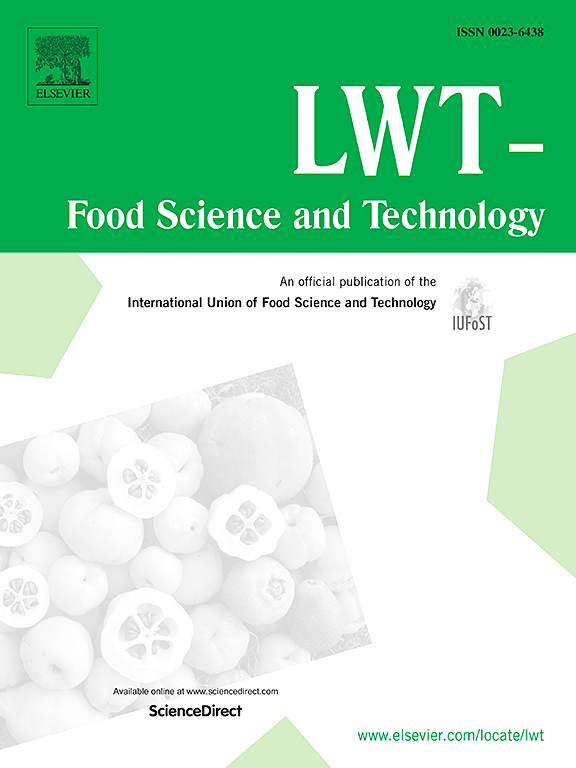Identification of fermentation time markers in caipu, a kind of traditional Chinese food
IF 6
1区 农林科学
Q1 FOOD SCIENCE & TECHNOLOGY
引用次数: 0
Abstract
Caipu is a popular pickled dry radish originated in China with promoting digestion and anticancer effects. The older caipu is considered to possess greater edible and medicinal values. But its composition changes during long term storage are still unclear. In this study, the properties of caipu stored for different years were compared to identified markers of different storage time points. Caipu undergoes significant color change during fermentation, turning dark after 10 years. The SEM results showed that cell structures in caipu were gradually destroyed over time. The protein and fat contents of 10 to 40-year-old caipu were significantly higher than those of 1-year-old caipu, and that the protein and fat contents of 20-year-old caipu reached peaks, at 14.0% and 13.2%, respectively. Moreover, the 16S rRNA and ITS analysis results showed that bacterial and fungal diversity decreased after fermentation. Finally, 67 kinds of volatile organic compound (VOCs) were identified by GC-MS. Among them, benzoic acid, furfural and tetradecamethyl cycloheptasiloxane were the most accumulated VOCs after fermentation and contributed to the distinctive aroma and flavor of caipu. In all, this study revealed the composition changes of caipu at different fermentation times, which will be beneficial for improving the processing of radish-based foods.
中国传统食品菜普发酵时间标记物的鉴定
菜普是一种流行的腌干萝卜,起源于中国,具有促进消化和抗癌的作用。古老的蔡普被认为具有更大的食用和药用价值。但其成分在长期储存过程中的变化尚不清楚。本研究对不同贮藏年份的菜普进行了性质比较,并对不同贮藏时间的菜普进行了鉴定。彩蒲在发酵过程中会发生明显的颜色变化,10年后会变暗。扫描电镜结果显示,随着时间的推移,彩蒲的细胞结构逐渐被破坏。10 ~ 40年生的彩蒲蛋白质和脂肪含量显著高于1年生的彩蒲,其中20年生的彩蒲蛋白质和脂肪含量最高,分别为14.0%和13.2%。此外,16S rRNA和ITS分析结果表明,发酵后细菌和真菌多样性下降。最后,GC-MS共鉴定出67种挥发性有机物(VOCs)。其中,苯甲酸、糠醛和十四甲基环七硅氧烷是发酵后积累最多的挥发性有机化合物,是形成菜蒲独特香气和风味的主要原因。本研究揭示了不同发酵时期菜普成分的变化规律,为改进萝卜基食品的加工工艺提供了有益的依据。
本文章由计算机程序翻译,如有差异,请以英文原文为准。
求助全文
约1分钟内获得全文
求助全文
来源期刊

LWT - Food Science and Technology
工程技术-食品科技
CiteScore
11.80
自引率
6.70%
发文量
1724
审稿时长
65 days
期刊介绍:
LWT - Food Science and Technology is an international journal that publishes innovative papers in the fields of food chemistry, biochemistry, microbiology, technology and nutrition. The work described should be innovative either in the approach or in the methods used. The significance of the results either for the science community or for the food industry must also be specified. Contributions written in English are welcomed in the form of review articles, short reviews, research papers, and research notes. Papers featuring animal trials and cell cultures are outside the scope of the journal and will not be considered for publication.
 求助内容:
求助内容: 应助结果提醒方式:
应助结果提醒方式:


